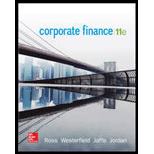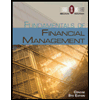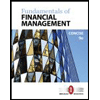
Financial Ratio Analysis A financial ratio by itself tells us little about a company because financial ratios vary a great deal across industries. There are two basic methods for analyzing financial ratios for a company: Time trend analysis and peer group analysis. In time trend analysis, you find the ratios for the company over some period, say five years, and examine how each ratio has changed over this period. In peer group analysis, you compare a company’s financial ratios to those of its peers. Why might each of these analysis methods be useful? What docs each tell you about the company’s financial health?
To discuss: Usefulness of time trend analysis and peer group analysis and their aspects on the company’s financial health.
Introduction:
Peer group analysis compares the operating performances and financial ratios of specific firms to a set of peer group companies within the similar business line or industry.
Time trend analysis compares the financial statement of the company’s historical data with that of forecasted data.
Explanation of Solution
Peer group analyses are the companies with same set of interest and characteristics and it compares the financial ratios of the company to its peers. Peer group analysis provides a comparison with the other peer groups with respect to operating performance and financial ratios. This will lead the financial managers to evaluate whether the investment, finance, operations of the firm goes beyond the norms and brings some actions or guidance to rectify them.
Time trend analysis compares its own historical data with the forecasted data. This helps the financial managers to evaluate whether the investment, finance, and operations of the firms are changed.
On the other hand, both these methods evaluate the company’s performance from the perspective of finance but have not a clear picture whether it is positive or negative.
Time trend analysis and peer group analysis indicates the difference with respect of the investment, finance, operations of the firm and does not indicate whether it is good or bad to the company. Hence, it is useful to know the financial health of the company.
Want to see more full solutions like this?
Chapter 3 Solutions
Corporate Finance (The Mcgraw-hill/Irwin Series in Finance, Insurance, and Real Estate)
- Calculate the future value of a lump sum of $1,000 invested for 4 years at 10%, using compounded quarterly.arrow_forwardIf value is not clear then please comment i will write values dont solve question, i will give unhelpful.arrow_forwardwhat are some of the question can i asek my prinsiple of finance teache?arrow_forward
- A critical discussion of the hockey stick model of start-up financing should be presented, supported by recent in-text citations. Provide a detailed explanation of the model. Describe each of the three stages of the hockey stick model of start-up financing, including a detailed characterisation of each stage. The characterisation of each stage should detail the growth, risk, and funding expectations. Present a critical evaluation and an insightful conclu sion.arrow_forwardQuestion Workspace Check My Work New-Project Analysis The president of your company, MorChuck Enterprises, has asked you to evaluate the proposed acquisition of a new chromatograph for the firm's R&D department. The equipment's basic price is $64,000, and it would cost another $18,000 to modify it for special use by your firm. The chromatograph, which falls into the MACRS 3-year class, would be sold after 3 years for $28,400. The MACRS rates for the first three years are 0.3333, 0.4445 and 0.1481. (Ignore the half-year convention for the straight-line method.) Use of the equipment would require an increase in net working capital (spare parts inventory) of $3,000. The machine would have no effect on revenues, but it is expected to save the firm $24,760 per year in before-tax operating costs, mainly labor. The firm's marginal federal-plus-state tax rate is 25%. Cash outflows and negative NPV value, if any, should be indicated by a minus sign. Do not round intermediate…arrow_forwardAlthough the Chen Company's milling machine is old, it is still in relatively good working order and would last for another 10 years. It is inefficient compared to modern standards, though, and so the company is considering replacing it. The new milling machine, at a cost of $108,000 delivered and installed, would also last for 10 years and would produce after-tax cash flows (labor savings and depreciation tax savings) of $19,000 per year. It would have zero salvage value at the end of its life. The project cost of capital is 11%, and its marginal tax rate is 25%. Should Chen buy the new machine? Do not round intermediate calculations. Round your answer to the nearest cent. Negative value, if any, should be indicated by a minus sign.arrow_forward
- If value is not clear then please comment i will write values dont solve question, i will give unhelpful.arrow_forwardFinance subject question solve i need help.arrow_forwardi submitted blurr images mistakely don't amswer.If image is blurr comment please i will write values . dont give answer with incorrect values. i will unhelpful answerarrow_forward
- Need help!!!If image is blurr comment please i will write values . dont give answer with incorrect values. i will unhelpful answerarrow_forwardhelp !If image is blurr comment please i will write values . dont give answer with incorrect values. i will unhelpful answerarrow_forwardListed here, are the 2018 and 2019 balance sheets. motors. and income statements,, for Otago Bay Marine Motors, a major manufacturer of top-of-the-line outboard a. On the basis of the information provided, calculate the following financial ratios for 2018 and 2019: b. Considering the financial ratios you computed, along with the industry averages, how would you characterize the financial condition of Otago Bay Marine Motors? Explain. a. Calculate the following financial ratios for 2018 and 2019. (Round to two decimal places.) Current ratio Otago Bay Marine Motors 2019 2018arrow_forward
 Financial And Managerial AccountingAccountingISBN:9781337902663Author:WARREN, Carl S.Publisher:Cengage Learning,
Financial And Managerial AccountingAccountingISBN:9781337902663Author:WARREN, Carl S.Publisher:Cengage Learning, Managerial Accounting: The Cornerstone of Busines...AccountingISBN:9781337115773Author:Maryanne M. Mowen, Don R. Hansen, Dan L. HeitgerPublisher:Cengage Learning
Managerial Accounting: The Cornerstone of Busines...AccountingISBN:9781337115773Author:Maryanne M. Mowen, Don R. Hansen, Dan L. HeitgerPublisher:Cengage Learning Fundamentals of Financial Management, Concise Edi...FinanceISBN:9781285065137Author:Eugene F. Brigham, Joel F. HoustonPublisher:Cengage Learning
Fundamentals of Financial Management, Concise Edi...FinanceISBN:9781285065137Author:Eugene F. Brigham, Joel F. HoustonPublisher:Cengage Learning Fundamentals of Financial Management, Concise Edi...FinanceISBN:9781305635937Author:Eugene F. Brigham, Joel F. HoustonPublisher:Cengage Learning
Fundamentals of Financial Management, Concise Edi...FinanceISBN:9781305635937Author:Eugene F. Brigham, Joel F. HoustonPublisher:Cengage Learning EBK CONTEMPORARY FINANCIAL MANAGEMENTFinanceISBN:9781337514835Author:MOYERPublisher:CENGAGE LEARNING - CONSIGNMENT
EBK CONTEMPORARY FINANCIAL MANAGEMENTFinanceISBN:9781337514835Author:MOYERPublisher:CENGAGE LEARNING - CONSIGNMENT





